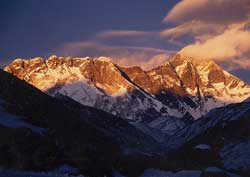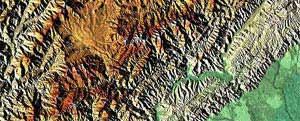 Rich fossil records at the “roof of the world” reveal that this mountain range formed much earlier than previously believed, and it once bordered a long-lost stormy coastline.
Rich fossil records at the “roof of the world” reveal that this mountain range formed much earlier than previously believed, and it once bordered a long-lost stormy coastline.
Researchers have discovered that the rocks in the Parahio Valley in the Spiti region of India contain traces of an ancient river delta that existed 500 million years ago, filled with fossils of shallow coastal life and debris from a much younger mountain range.
This discovery strikes a significant blow to the long-held belief that the accumulation of the Himalayas began only 50 million years ago.
“When you look at the Himalayas, you are often impressed by the idea that everything happened in the Cenozoic (around 50 million years ago), but in reality, the early formation of this mountain range occurred during the Cambrian period (542-488 million years ago) or even earlier,” said geologist Paul Myrow from Colorado College in Colorado Springs.
Myrow and his team trekked up and down the steep slopes of the Parahio Valley, collecting the first complete geological “slices” of the area. Each slice consists of multiple layers of rock, resembling a multi-layered cake that geologists study to reconstruct the history of the region.
 |
|
A 3D image captured by the Endeavour shuttle in 2000. The Himalayas are considered to be much older than recent calculations suggest. (Photo: AP) |
They investigated layers starting at an elevation of 4,200 meters and extending to over 4,500 meters above sea level. What they found was a “treasure” of extinct trilobite species that helped date the rock samples. Trilobites are among the earliest arthropods, related to crabs, centipedes, and spiders.
The researchers also uncovered numerous traces of a shallow coastal area that once lay along the northern edge of India before colliding with the Eurasian plate, close to the Tethys Sea, which contributed to the formation of the Himalayas we see today.
T. An





















































